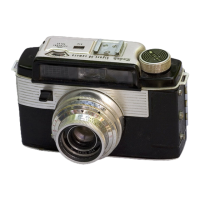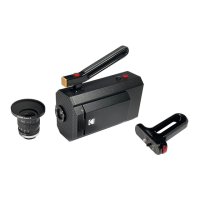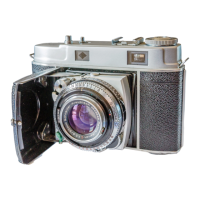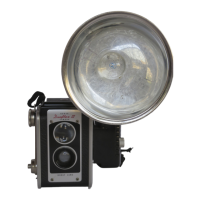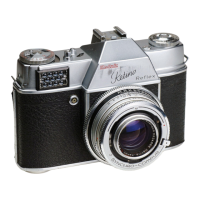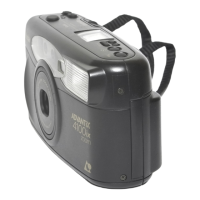Focus
SHARPNESS
or
definition refers
to
the
outlines
of
the
image. When
th~se
outlines are
sharp,
the
picture
is
in
good focus. A camera lens
is
focused
by
moving
it
to
and from
the
film. On
the
lenses for
the
Cine-Kodak
Special
this
is
accomplished
by
rotating
the
FOCUSING
COLLAR
until
the
figure
showing
the
distance in feet from camera
to
subject is
at
the
INDEX
LINE
(Figure
24).
REFLEX
FINDER
F
ig
24
Another
method
of
focus-
ing
the
Cine-Kodak
Special
is
to
use
the
REFLEX
FIND-
ER
and
to
focus visually.
This
obviates
estimating
distances. Use
of
the
reflex
finder
is
described on page 42.
DEPTH
OF
FOCUS:
When
the
lens
is
focused on a given
distance, objects
somewhat
nearer and
farther
than
that
distance,
will
be
in
good
focus.
This
range
is
called
depth of
focus
or
range
of
sharpness.
This
depth
is greater
the
smaller
the
diaphragm
used.
For
example,
the
I-inch
f. 1.9
lens
wide
open,
focused at 6 feet,
has
a
depth
from S
to
7 feet. Objects
not
in
that
range
will
be blurred.
But
when
the
smallest
opening
(f.16)
is used,
the
depth
increases so
that
objects from
2~
feet
to
infinity are
sharp.
When
poor
light
conditions
compel
the
use
of
a
large
diaphragm,
care
must
be
taken
in
estimating
distances
to
avoid out-of-focus pictures.
With
the
smaller openings
(f.S.6
and smaller),
depth
is so
great
that
the
I-inch
f.1.9 lens can be used as a "fixed-focus" lens
when
set
on
2S
feet. Even
with
these small openings, however,
it
is necessary
to
focus
accurately for close-ups.
Depth
of
focus is
much
less for near distances
than
for far.
27

